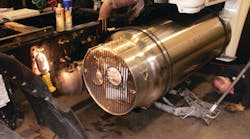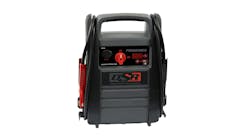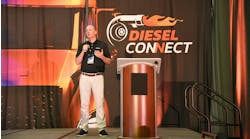Natural gas stations are ramping up and projections are that more than one million natural gas vehicles will be sold by 2019. Forecasts predict truck sales at 14 percent and bus sales at 19 percent, with key sectors driving this growth to include refuse trucks, utilities, transit and construction.
Sooner or later all service and repair shops will need to prepare for natural gas maintenance.
According to Chris Craddock, director of operations for dedicated service and parts network WheelTime (www.wheeltime.com), upfitting shops for natural gas maintenance may vary greatly due to differences in the shop sizes, customer demand and facility age, as well as state and local regulations. For some shops, preparing to handle natural gas might be as easy as installing different ventilation systems or methane detection systems. Other shops may require encased electrical systems for fans and lighting and changing to compliant heating systems.
Upfit costs can range from as low as $40,000 to as much as $750,000, he notes.
From their experience, WheelTime suggests shop supervisors consider the following:
1. Safety first. Behind all regulations and requirements, one thing is common: the importance of safety.
Natural gas systems are proven safe on the road but working on the natural gas fuel system in an enclosed area of a shop could cause problems without proper precautions. Gas that would normally dissipate harmlessly into the air might be trapped inside the facility and susceptible to igniting.
In preparation for installing and servicing natural gas technologies, WheelTime members have equipped their shops with new ventilation and methane detection systems to keep shops and technicians safe and to meet codes and regulations.
The first step is to check on safety requirements and regulations in your area with authorized groups, such as your local fire marshal, the National Fire Protection Association and local and state government offices.
2. Train. Investment in natural gas training and safety certification programs is another essential. The goal should be to make technicians aware of such issues as how to deal with the high pressures of compressed natural gas systems and the challenges of extreme temperatures and liquid-to-gas conversion of liquefied natural gas during preventive maintenance and repairs.
3. Plan for risks. Preparing for potential hazards and implementing a program of training and safety precautions can help shops make their case when applying to local fire marshals and state governments for shop permit approvals. A basic checklist for upfitting shops for natural gas includes:
- Proper ventilation systems.
- Methane detection system.
- A clear space of at least 18’’ between the ceiling and overhead electrical devices (such as fans or lighting).
- Sealed electrical devices to avoid unintentional ignition of excess natural gas released into the air during a service (i.e. lighting, door motors, ventilation system electrical boxes, etc.).
WheelTime’s Craddock says shops can find ways to save money while still meeting the standard natural gas safety requirements. For instance, shops can designate and upfit only certain bays for natural gas maintenance. This measured approach will allow shops to work safely at current volume levels and defer the cost of upgrading the entire shop.




